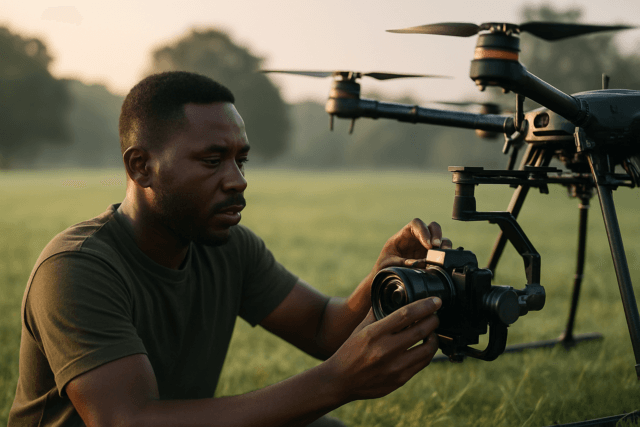The promise of drone delivery, once a futuristic concept, is rapidly approaching widespread reality, propelled by continuous technological advancements and, crucially, evolving regulatory frameworks. Governments and aviation authorities worldwide are actively refining policies to safely integrate Unmanned Aerial Vehicles (UAVs) into national airspace, transforming logistics and last-mile delivery. These updates are pivotal, transitioning from an era of exemptions and trial-and-error to standardized, scalable operations that will define the future of drone-based services.
United States: Unlocking Beyond Visual Line of Sight (BVLOS)
In a landmark move, the U.S. Department of Transportation, alongside the Federal Aviation Administration (FAA), unveiled a significant proposed rule on August 5, 2025, aimed at “Normalizing Unmanned Aircraft Systems Beyond Visual Line of Sight Operations” (BVLOS). This long-awaited framework is designed to move away from the cumbersome, case-by-case waiver system that has historically limited the scalability of drone delivery and other commercial drone applications.
Key Provisions of the Proposed FAA BVLOS Rule:
- Expanded Operational Scope: The proposed rule, potentially to be known as Part 108 of the federal code, is set to enable routine BVLOS flights for a wide array of commercial activities, including package delivery, agricultural applications, aerial surveying, and public safety missions. This is a critical step towards maximizing the economic and societal benefits of drone technology.
- Altitude and Weight Limits: Operations will generally be restricted to altitudes at or below 400 feet above ground level (AGL). Drones, including their payload, will have a maximum takeoff weight cap of 1,320 pounds, with package delivery operations specifically permitted up to 55 pounds.
- Safety and Airspace Integration: A core focus is on ensuring safety. The rule mandates that drones be equipped with collision-avoidance technology to prevent mid-air incidents with other aircraft. Operators will be required to use FAA-approved automated data service providers (ADSPs) to facilitate safe separation from other aircraft, and these ADSPs will also be regulated by the FAA. Furthermore, stringent precautions are outlined to prevent disruption around airports and other aviation facilities.
- Operational Requirements and Certifications: Drone operators intending to conduct BVLOS flights will need to obtain certification and undergo background checks. The framework also introduces two pathways for approval: permits for lower-risk, limited-scale operations (like certain package deliveries) and certificates for higher-risk, larger-scale endeavors. Manufacturers will no longer require traditional FAA certification for aircraft, instead adhering to FAA-accepted industry consensus standards for approval, streamlining the airworthiness process.
- Over-People Operations: While the rule allows flights over people, it specifically prohibits operations over large, open-air gatherings such as concerts or sporting events, prioritizing public safety.
- Timeline and Public Comment: The proposed rule was published for public inspection on August 7, 2025, initiating a 60-day comment period for interested parties to provide feedback. The FAA is under a directive to publish the final rule by April 2, 2026, with implementation anticipated to begin in early 2026. This expedited timeline reflects a governmental push to accelerate commercial drone operations and reinforce American leadership in the unmanned aerial systems sector.
United Kingdom: Roadmaps and Remote ID Implementation
The UK’s Civil Aviation Authority (CAA) is also making significant strides in modernizing its drone regulations. In February 2024, the CAA announced proposals to enable Beyond Visual Line of Sight (BVLOS) flights, specifically aiding operations like medical supply deliveries and infrastructure inspections. These new rules would permit low-height BVLOS flights, requiring drones to stay within 30 meters of buildings or 15 meters of structures like roads or railways.
Looking ahead, the CAA unveiled a comprehensive roadmap in September 2024, outlining the integration of drones into UK airspace with the goal of establishing routine BVLOS operations by 2027. This roadmap addresses safety challenges and aims to deliver essential goods and services efficiently.
Further regulatory updates confirmed in May 2025, following a consultation, aim to simplify rules, enhance safety, and introduce new requirements:
- Product Requirements and Marking: The CAA is implementing product standards for drones via class-marking (e.g., UK0 instead of C0), ensuring safety and security from the point of manufacture.
- Enhanced Education: Mandatory free online Flyer ID training is being extended to users of drones weighing over 100g, improving user understanding of safety rules.
- Remote Identification (Remote ID): Direct Remote ID requirements are set to be implemented from January 1, 2026, for certain UK class-marked UAS, allowing drones to broadcast identification and location data.
European Union: Standardizing and Adapting to Innovation
The European Union Aviation Safety Agency (EASA) has been working to standardize drone regulations across its member states, with key regulations (EU 2019/947 and 2019/945) progressively coming into force.
Recent developments include:
- CE Marking and Electronic ID: As of January 1, 2024, only CE-marked drones can be sold in the EU, and Electronic ID is mandatory for drones in the Open Category (with Class C1, C2, and C3 markings).
- Updated Access Rules: In July 2024, EASA published revised Easy Access Rules for Unmanned Aircraft Systems, which incorporate new regulations (Commission Delegated Regulation (EU) 2024/1108 and Commission Implementing Regulation (EU) 2024/1110) addressing the airworthiness of UAS operations in the specific category. These rules are regularly updated to accommodate further changes and feedback.
- Airworthiness and Certification Proposals: EASA’s Notice of Proposed Amendment (NPA) 2024-06, published in September 2024, consults stakeholders on draft proposals for the initial and continuing airworthiness of certified UAS. This initiative is crucial for ensuring a high level of safety for drones in the ‘specific’ category and supporting the integration of new operational and mobility concepts.
These ongoing regulatory updates across major global aviation bodies underscore a collective commitment to fostering the safe and scalable growth of the drone delivery industry. As technology continues to advance, the regulatory landscape will undoubtedly continue to adapt, paving the way for drones to become an increasingly common sight in the logistics networks of the future.





